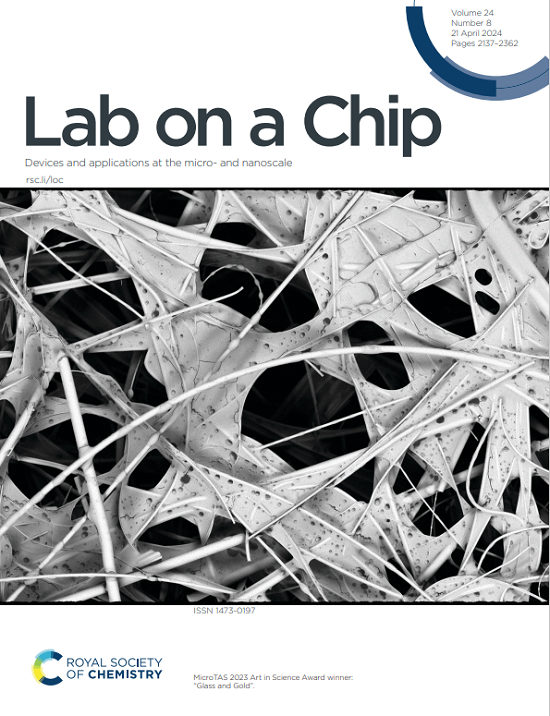基于荧光的即时护理HIV病毒载量检测用于抗逆转录病毒治疗监测
IF 5.4
2区 工程技术
Q1 BIOCHEMICAL RESEARCH METHODS
引用次数: 0
摘要
有效监测艾滋病毒治疗仍然受到负担得起的、敏感的和用户友好的病毒载量诊断方法的限制,特别是在资源有限的环境中。为了解决这一关键问题,开发了一种全自动的即时护理设备,该设备将微流控样品处理与超灵敏的基于生物发光的病毒载量检测相结合。在简单的样品装载后,该系统自动执行所有检测步骤,包括使用抗体偶联磁珠富集多种HIV亚型,通过酶级联进行生物发光信号放大,以及使用低成本光学传感器进行病毒载量定量。使用87份hiv加标血浆样本进行分析验证,确认了95拷贝/mL的检测限和可靠的病毒载量定量。53例患者样本的临床试验显示,该方法的灵敏度为95%,特异性为100%,超过了目前可用的POC测定方法。该分析可在65分钟内完成,每次测试的成本不到3美元,进一步支持其广泛实施的可行性。该平台在不同用户体验水平上的易用性和强大性能支持其在扩大抗逆转录病毒治疗监测和改善全球艾滋病毒管理方面的潜力。本文章由计算机程序翻译,如有差异,请以英文原文为准。
A luminescence-based point-of-care HIV viral load test for antiretroviral therapy monitoring
Effective monitoring of HIV treatment remains constrained by limited access to affordable, sensitive, and user-friendly viral load diagnostics, particularly in resource-limited settings. To address this critical gap, a fully automated, point-of-care device was developed that integrates microfluidic sample processing with ultrasensitive bioluminescence-based viral load detection. Upon simple sample loading, the system autonomously performs all assay steps, including enrichment of multiple HIV subtypes using antibody-conjugated magnetic beads, bioluminescence signal amplification via enzyme cascades, and viral load quantification with a low-cost optical sensor. Analytical validation using 87 HIV-spiked plasma samples confirmed a 95 copies/mL detection limit and reliable quantification of viral loads. Clinical testing with 53 patient samples demonstrated 95% sensitivity and 100% specificity, exceeding the performance of currently available POC assays. The assay can be completed within 65 minutes at a cost of less than $3 per test, further supporting its feasibility for widespread implementation. The platform's ease of use and robust performance across different user experience levels support its potential for expanding access to ART monitoring and improving HIV management worldwide.
求助全文
通过发布文献求助,成功后即可免费获取论文全文。
去求助
来源期刊

Lab on a Chip
工程技术-化学综合
CiteScore
11.10
自引率
8.20%
发文量
434
审稿时长
2.6 months
期刊介绍:
Lab on a Chip is the premiere journal that publishes cutting-edge research in the field of miniaturization. By their very nature, microfluidic/nanofluidic/miniaturized systems are at the intersection of disciplines, spanning fundamental research to high-end application, which is reflected by the broad readership of the journal. Lab on a Chip publishes two types of papers on original research: full-length research papers and communications. Papers should demonstrate innovations, which can come from technical advancements or applications addressing pressing needs in globally important areas. The journal also publishes Comments, Reviews, and Perspectives.
 求助内容:
求助内容: 应助结果提醒方式:
应助结果提醒方式:


